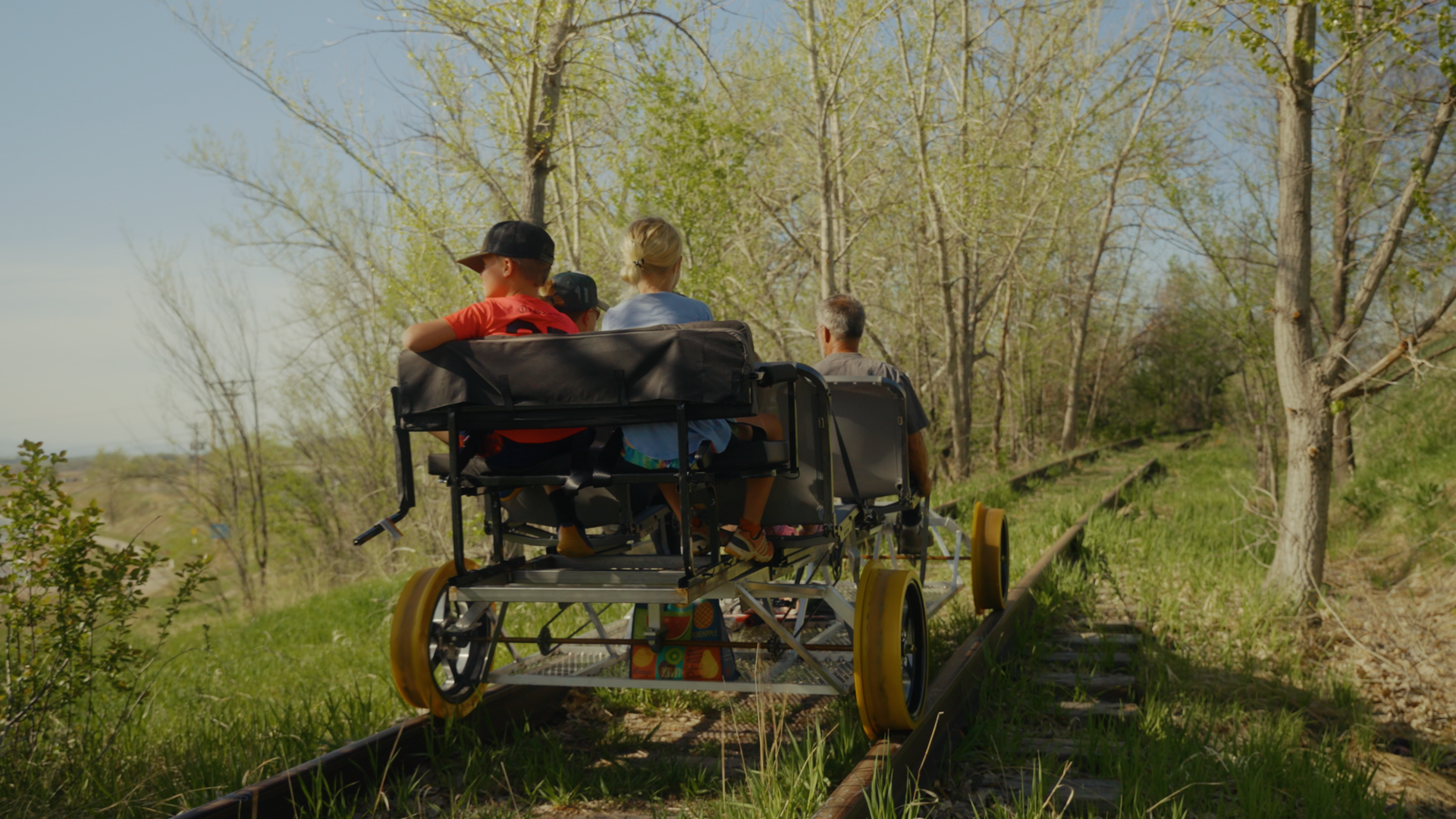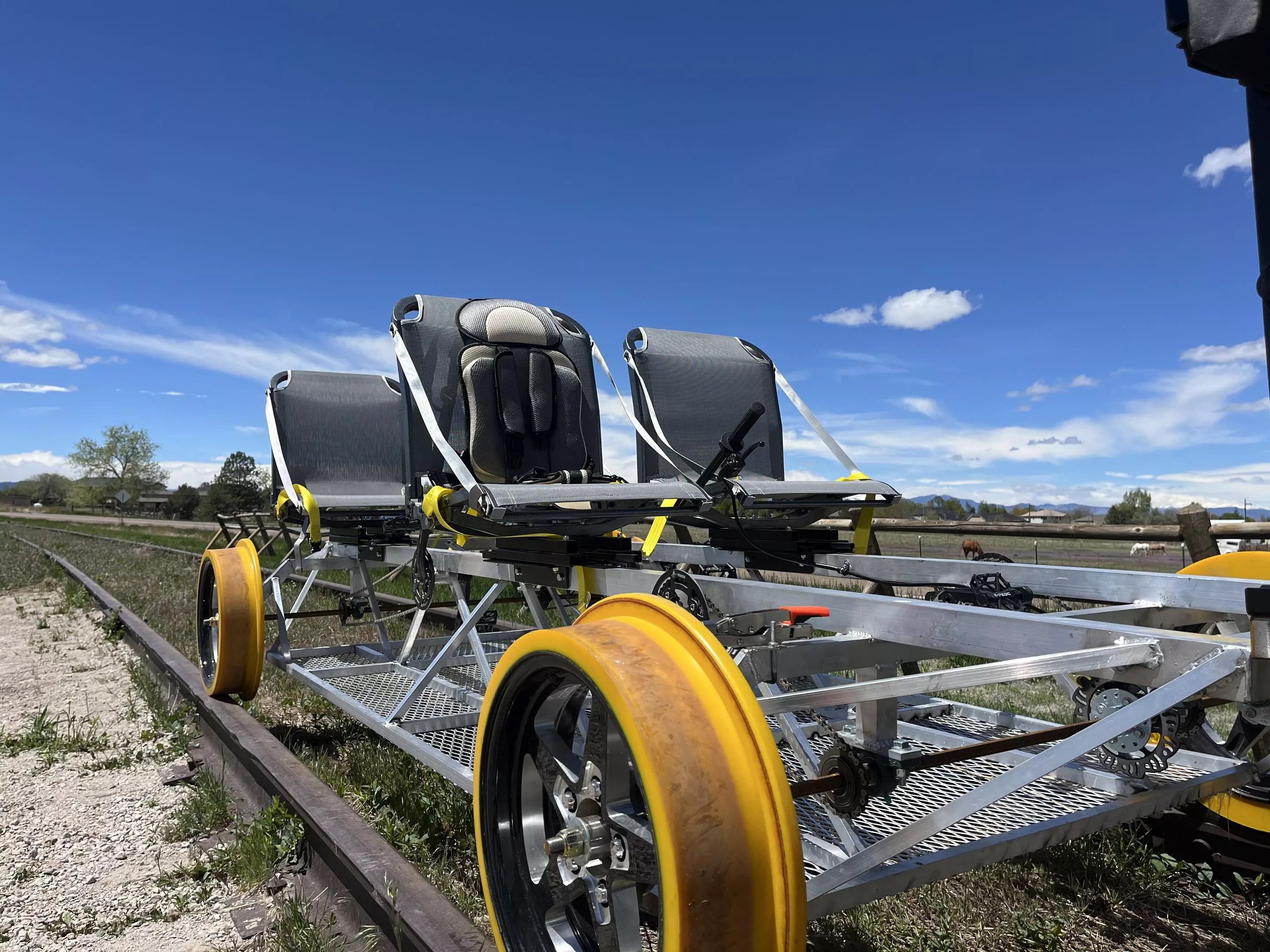
Colorado Railbike Adventures

Audio By Carbonatix
From rafting through canyons to climbing high peaks, outdoor recreation abounds just outside of Denver – and on May 24, rail-biking will add to the mix. Colorado Railbike Adventures, located in Erie at 4121 County Road 3, has a fleet of eighteen pedal-powered vehicles that will allow groups of four to ride along the second-oldest train tracks in Colorado.
The business concept came about serendipitously when, during the pandemic, co-founder Jeff Rummer’s child was learning about levers in elementary school. Rummer’s father, now a partner in the business, helped his grandchild grasp the concept by building a lever-operated handcar to run on the defunct train tracks adjacent to the family’s backyard.
“The idea came from there. It went from a lever cart to pedal cars, and we realized that rail-biking was a thing,” recalls Rummer. He adds that eighteen similar attractions are spread throughout the country, mainly in the Northeast, where “there’s a lot of railroad history and abandoned rails.”

The bikes were built in Colorado Springs using wheels manufactured in Leadville.
Colorado Railbike Adventures
This year, make your gift count –
Invest in local news that matters.
Our work is funded by readers like you who make voluntary gifts because they value our work and want to see it continue. Make a contribution today to help us reach our $50,000 goal!
Five of those eastern rail-biking operations are managed by Revolution Rail Co., which also has a location in South Fork – a town about four hours from Denver in the San Luis Valley. Along with being more easily accessible, Colorado Railbike Adventures differentiates itself by being the only Colorado-owned rail-biking business, along with having a longer-than-average season.
Tours will be available for eight months of the year per the company’s current site permit, which Rummer and his family attained by collaborating with the town and county. The more time-consuming challenge, though, was securing a lease from RTD, which purchased the tracks from Union Pacific after they went out of service in the early 2000s.

The Boulder Valley Mine Route involves roughly ninety minutes of pedaling.
Colorado Railbike Adventures
The tracks “date back to 1871 and originally brought coal out of the Erie coal fields to Denver and surrounding areas,” Rummer explains. The town of Erie, which will celebrate its 150th anniversary this year, was originally named Coal Park, given early settlers’ discovery of large coal seams.
Before miners went on strike in 1884, Boulder Valley Mine was the largest coal producer in the state. Its former entrance is set just around 150 yards from Colorado Railbike Adventures’ namesake route, which spans 4.2 miles round trip. Although the mine has been filled in and structures no longer exist, the history of the area is evident if you look closely.
“What you can see is this kind of dip in the hillside where the mine entrance was, and then there’s these two mounds,” Rummer says. “They actually had a fort built on top of those two mounds to guard the mine back in the late 1800s.” Tailing piles are also visible near the bygone mine, and other historic sites make up the route, which turns around in Old Town Erie.

Pick up tickets and refreshments at the depot.
Colorado Railbike Adventures
Come fall, Colorado Railbike Adventures will open the eight-mile Longs Peak Route, which will head farther west and terminate at one of the original stagecoach stops along the Overland Trail. “When you think about the Denver suburbs, you don’t really think about the Wild West,” Rummer notes,” but it all started right here. There’s some really cool stories that we’re planning to share with patrons.”
Additionally, both experiences offer incredible views of the Front Range and are moderate in difficulty. “We’ve geared [the railbikes], so they should be fairly accessible for most folks,” adds Rummer, who anticipates that families and school field trips will make up a large part of the attraction’s audience.
Currently, Colorado Railbike Adventures’ ten-acre lot includes a sixty-car parking area and a newly constructed ticketing depot surrounded by picnic tables and yard games. With around seven vacant acres remaining, Rummer hopes to build a barn-style indoor event venue that will cater to large groups and, ideally, help to extend operational dates.
He also wants to use another section of land to save one of the town’s original train depots, which is set on a neighboring property that’s up for sale. “We’re trying to work with the [Erie] Historical Society and the property owner to figure out how we could be a home to that depot building,” he says, “because it dates back to the early 1900s.”
In addition to rescuing and repurposing historical markers, Rummer hopes the opening of Colorado Railbike Adventures will support today’s locals: “We think that [it] can help be a magnet and a multiplier for the businesses that are here in the Erie area.”